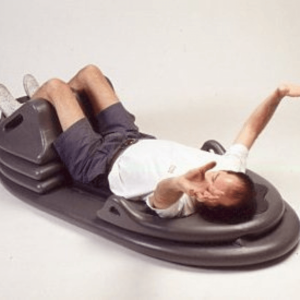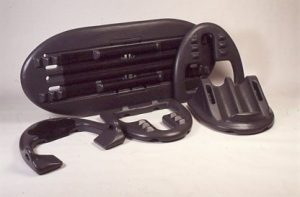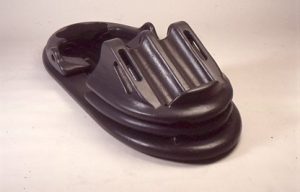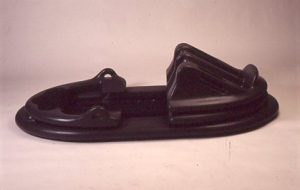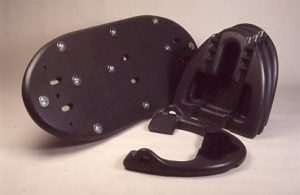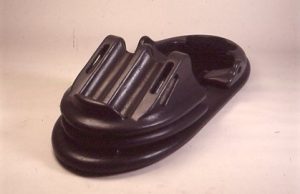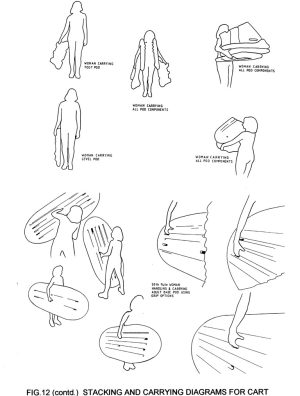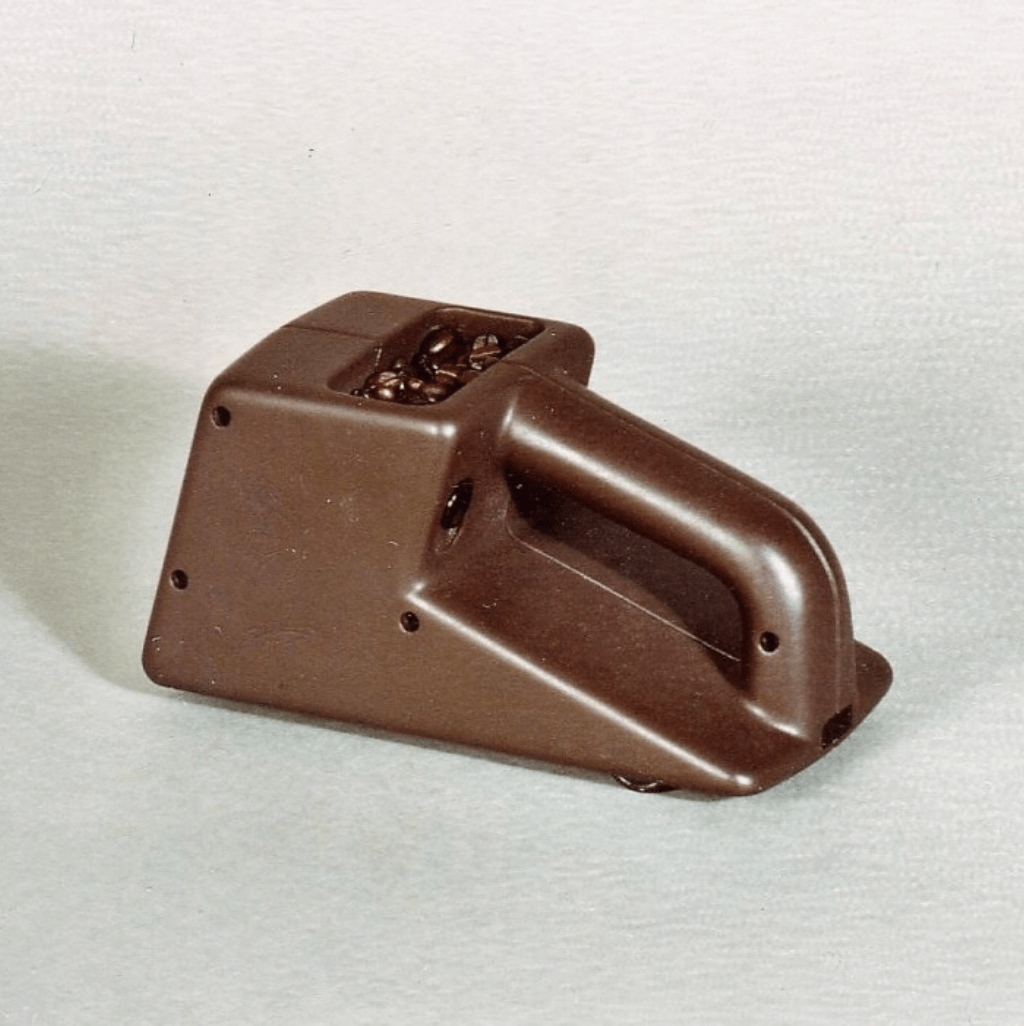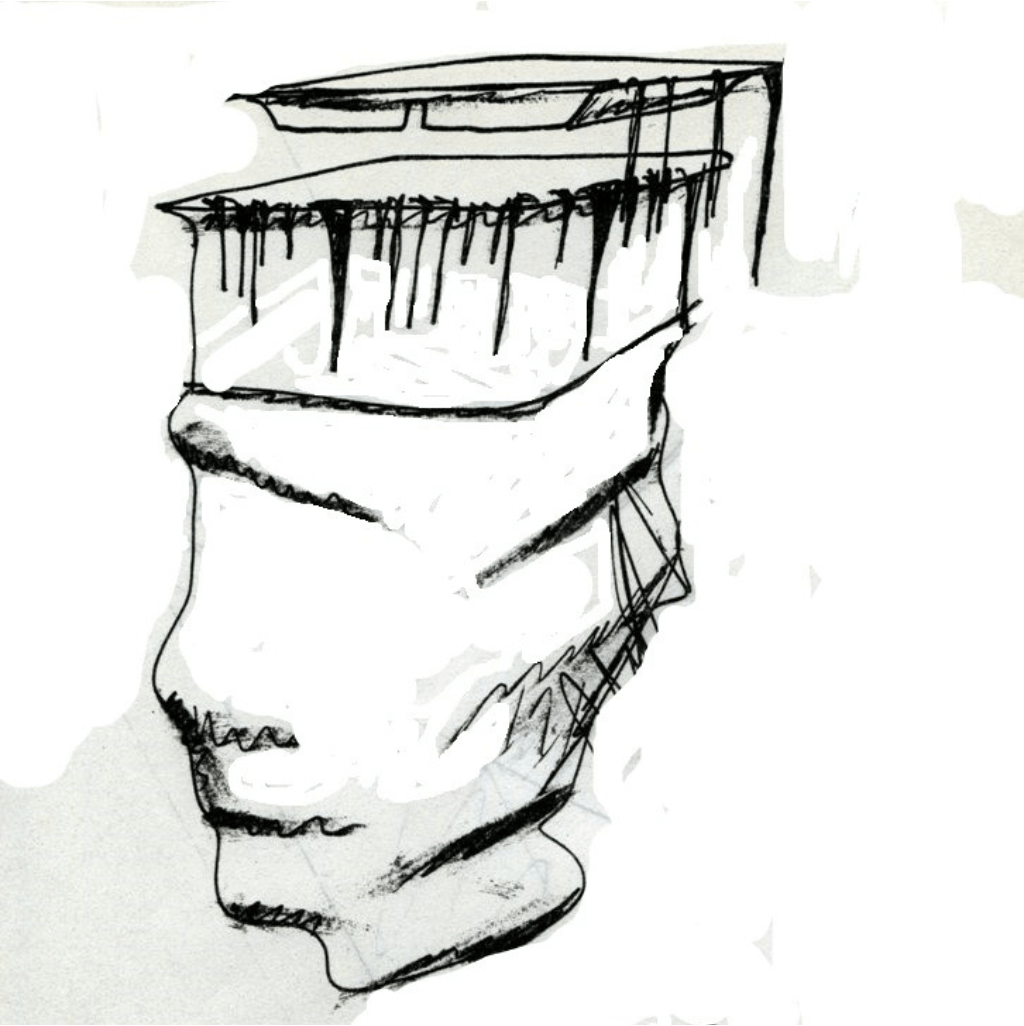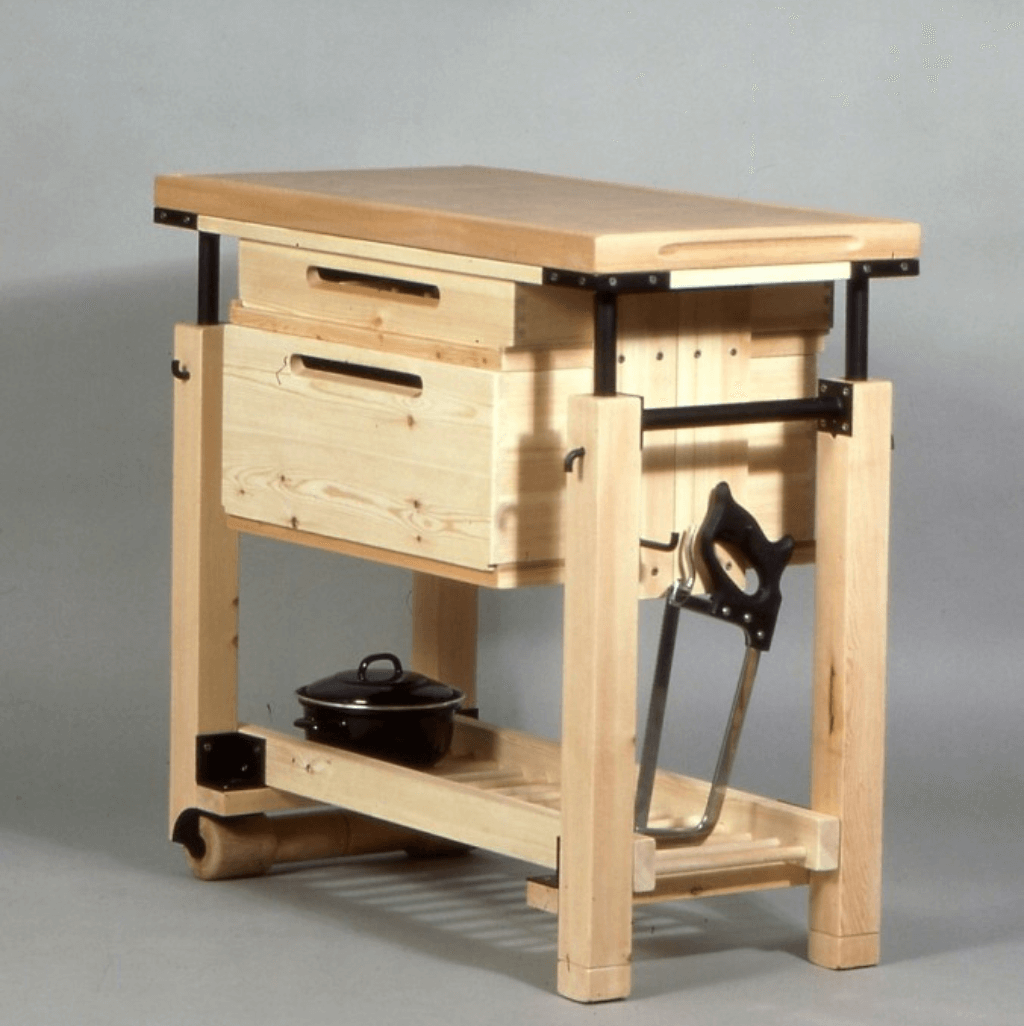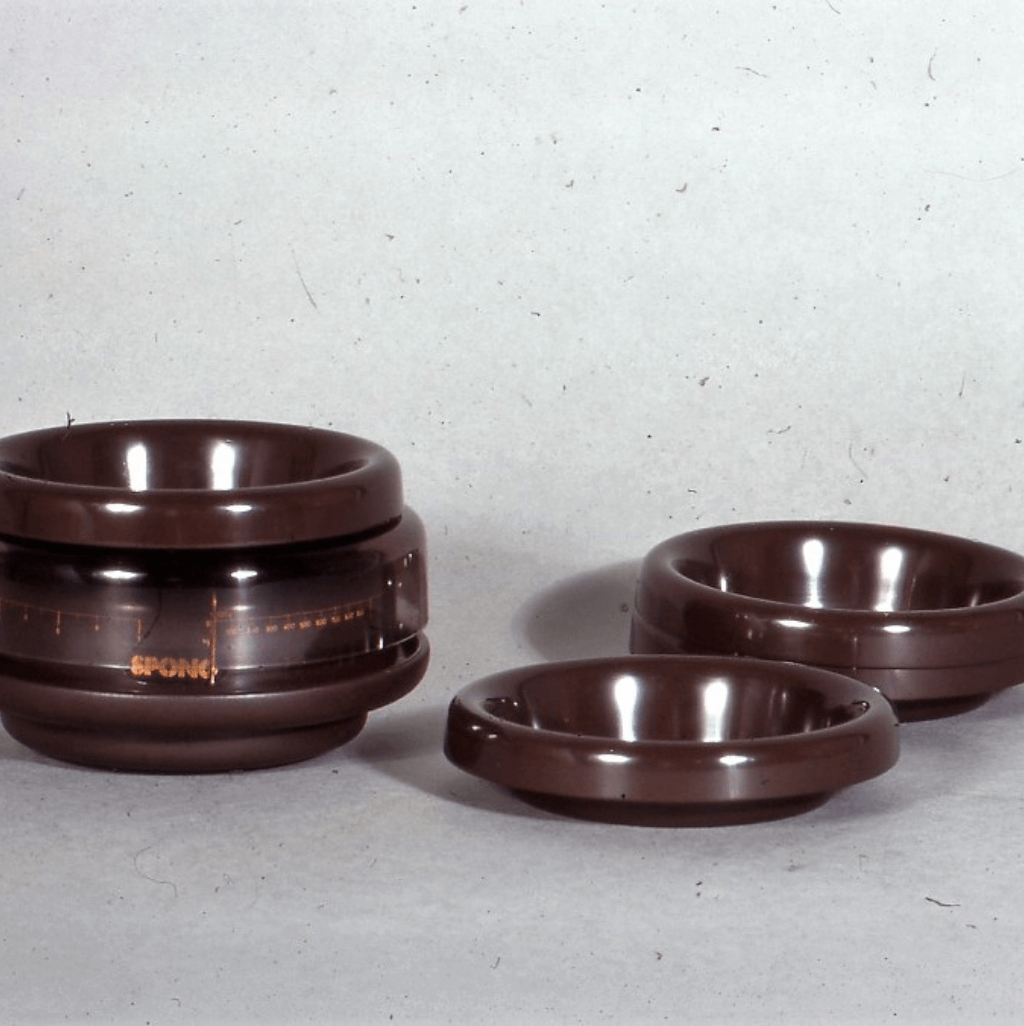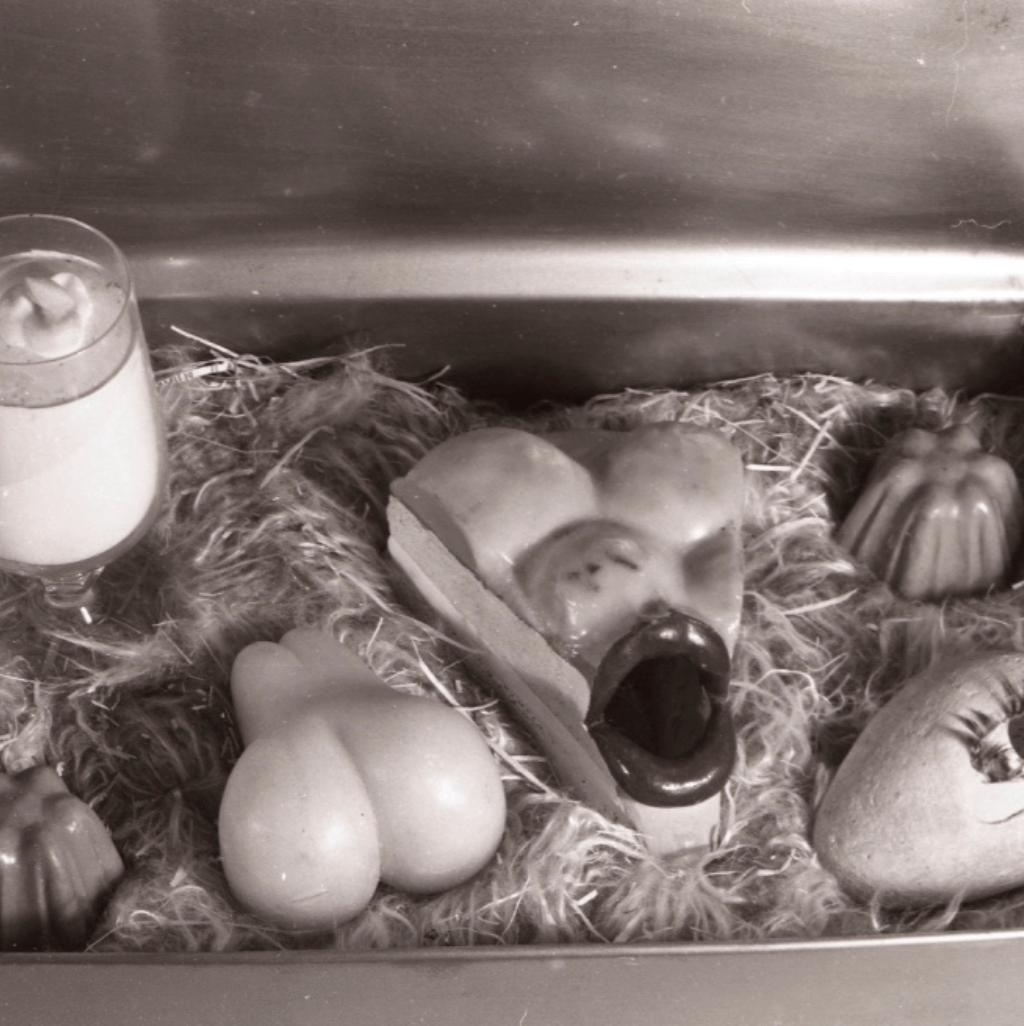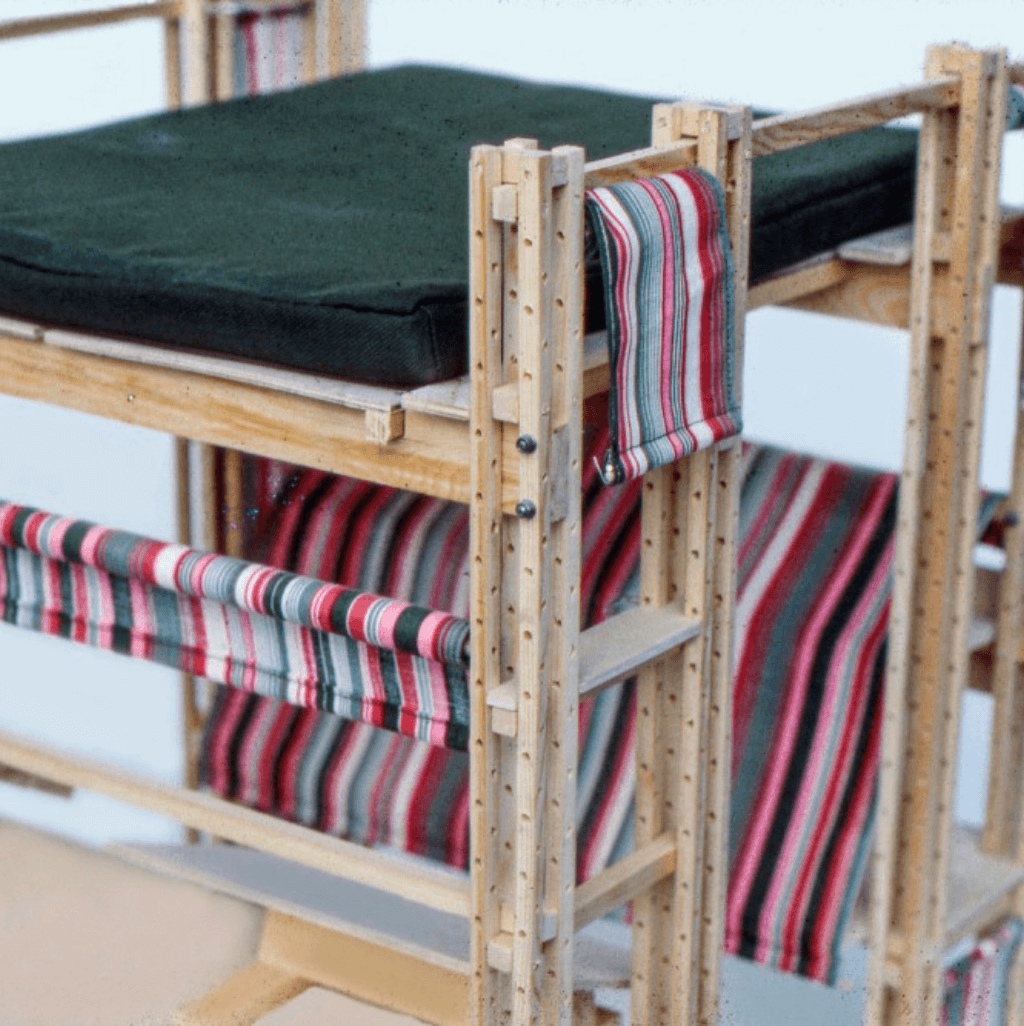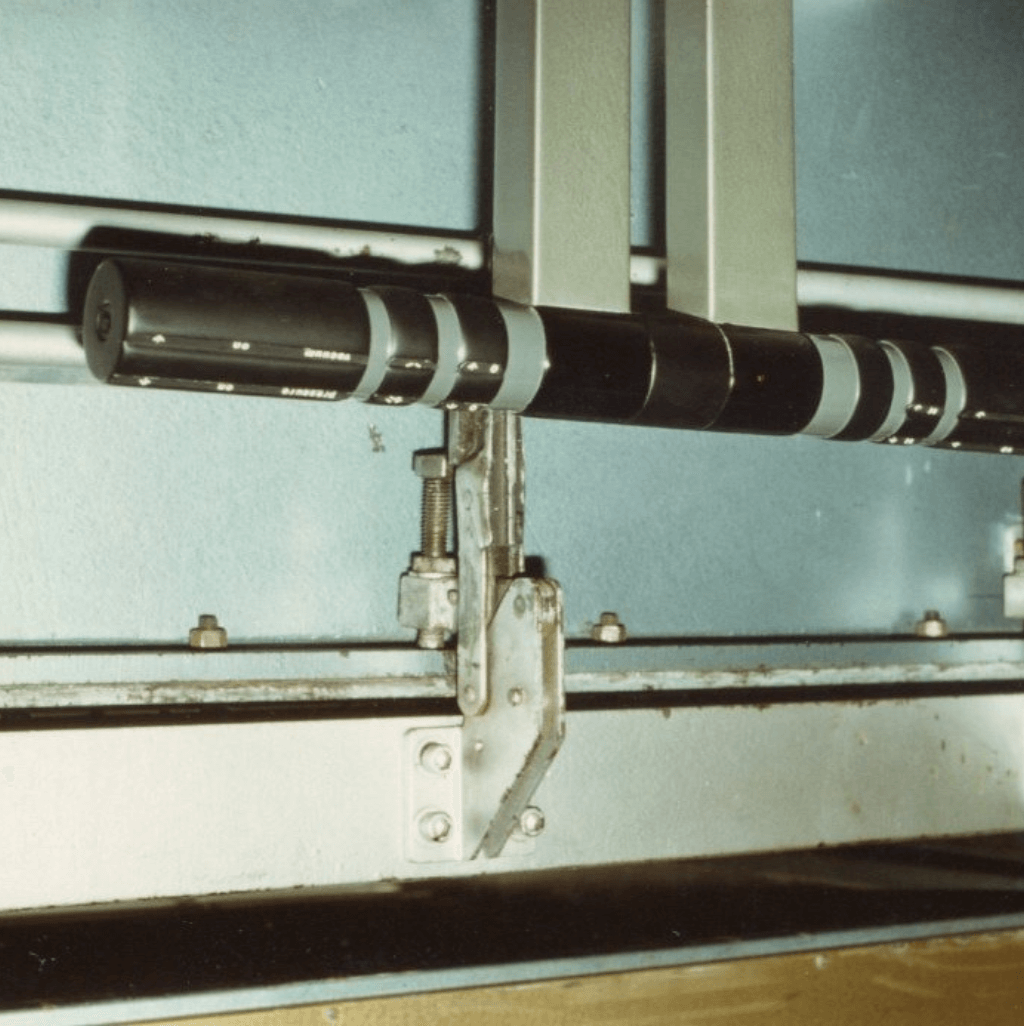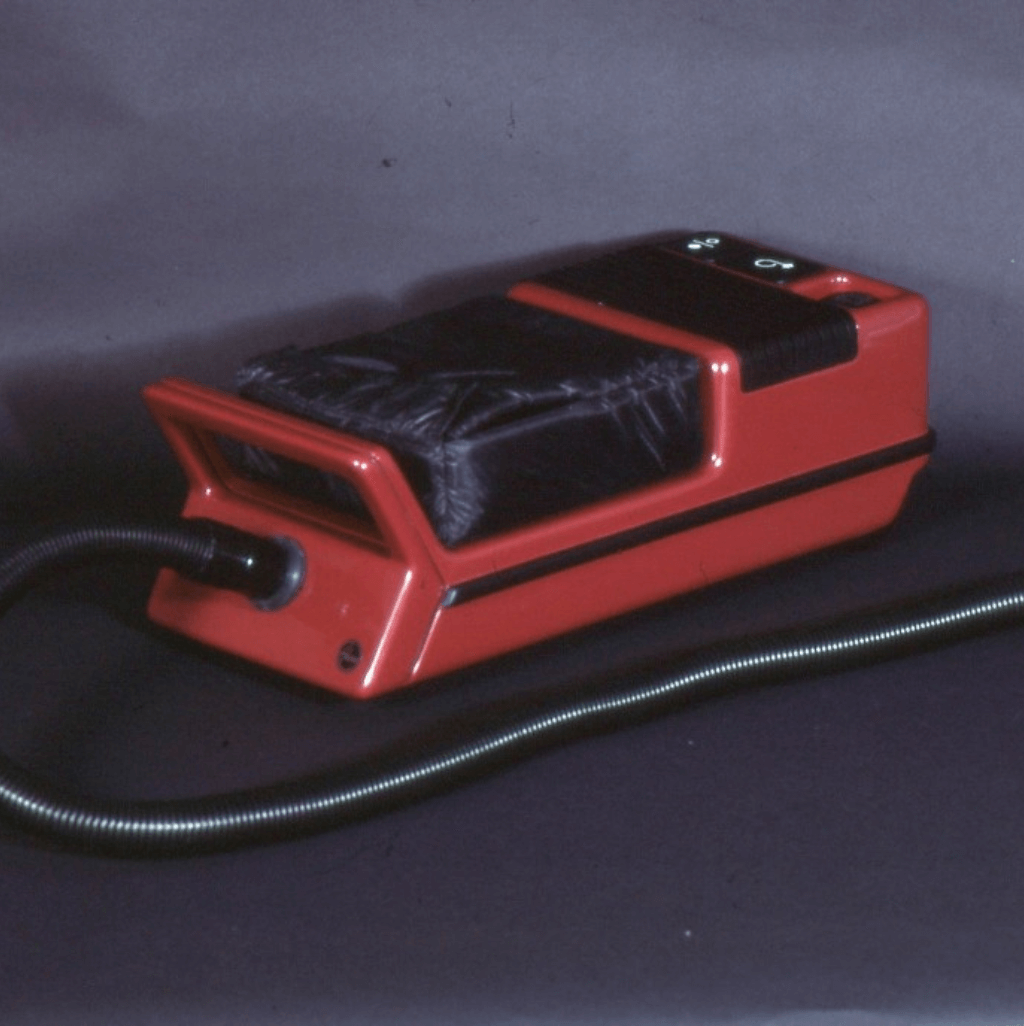Back Games, Mark Lewis. MA Design Research for Disability, London Guildhall University, 1995.
Abstract:
The Back Games project investigated the use of athletic play as a therapeutic activity for people with spinal cord injury or cerebral palsy.
The aim of the project was to develop a system that promoted muscular growth, aerobic activity and the use of sensory perception mechanisms for children and adults, in addition to providing an opportunity for play.
Two systems evolved, both involving the participant in the actions of reaching, grasping, pulling and pushing of the upper limbs, and the reaching and kicking of the lower limbs whilst in a supine posture (lying on one’s back).
You will find below the design concepts and outlines about the design process.
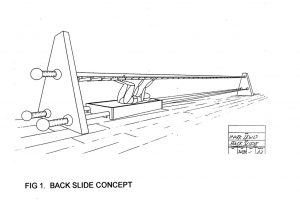
Fig 1: The Back Slide apparatus is, essentially, a ladder running parallel and horizontally over a ‘railway’ running up a slight incline, over a distance of at least six meters. Between the ladder and ‘railway’ the player lies in supine on a cart mobile by it wheels on the track. The Back Games Arena concept developed from the Back Slide. This expanded the mobility of the player on the cart universally but in a horizontal plain.
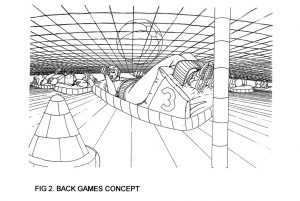
Fig 2: In essence, the arena is the size of a basket ball court would be formed by a wall from which a net is hung above and parallel to the floor. Between the net and the floor the player lies on a the cart made mobile by its wheels on the floor. This principle of mobility that can be accelerated, propels the cart at speeds in any direction around the arena.
Figs 3 & 4; These show the treatments of neuromuscular dysfunctions, as proposed by Temple Fay in 1954.
Fig 5 & 16: To facilitate the testing of the concept of the Back Games a prototype on the concept was built. It comprised the following; a nylon net of 3mm diameter nylon cord woven into 4 inch squares and stretched over an area of 2.5 x 5 meters and suspended 600mm above a vinyl floor, two Back Carts fabricated out of plywood, shaped to an ergonomic format that lifts the head like a pillow and fixes the legs in flexion using foam to form the pillow and leg supports, made mobile with furniture castors affixed to their undersides, a puck made of a small traffic cone with castors fixed to its underside, and some leather gloves.
Figs 6, 7, 8 & 9: Full size plans and elevations for the cart.
Figs 10 & 11: In order for the Back Games to be accessible to both children over the age of 5 and adults of either sex, the system incorporated adjustable components which accommodated the variable body sizes. In addition to these adjustments, two cart sizes are necessary.
Figs 12, 13 & 14: The other ergonomic considerations illustrated show the handle details in the cart pod componets and how each may be carried and stacked for storage, as well as the proportion of the carts in relation to the arena (fig 13) and the height adjustment of the net and ladder (fig 14).
Fig 15-23: Back Games original sketch ideas and details.

